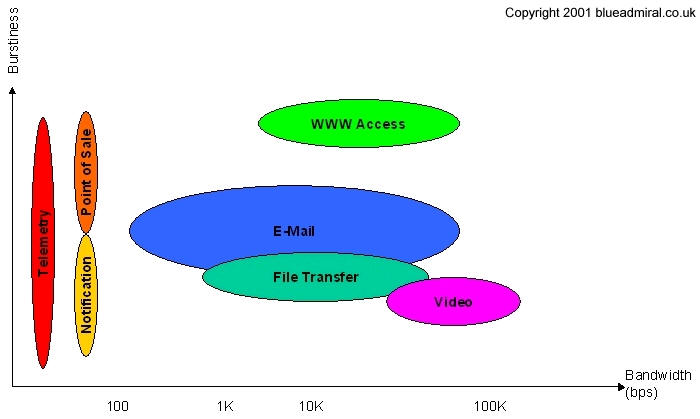|
High Speed Circuit Switched Data (HSCSD)
HSCSD is basically an upgrade of the original GSM CS data transmission
system, by using HSCSD the speed at which data is transmitted is greatly
improved. The higher data transmission rates are achieved by making use
of bundled Traffic Channels (TCH). The way that this works is the MS
requests one or more TCHs from the GSM network, in other words the MSC
will allocate TDMA slots within a TDMA frame. This allocations do not
need to be asymmetrical i.e. more slots can allocated downlink than the
uplink, this fit the behavior of most users, typically the user will
download more than they will upload. HSCSD requires software upgrades in
an MS and MSC, this is because both have to be able to split a single
traffic stream into several traffic streams, each using a TCH, and then
to combine the streams again.
In theory a single MS could use all eight time slots within a TDMA frame
to achieve an Air Interface User Rate (AIUR), for example 8 TCH/F14.4
channels or 115.2 kbit/s (ETSI 1998) TR 101 186. One major problem with
this configuration is that the MS is required to send and receive at the
same time. However standard GSM does not support this, uplinks and down
links are always shifted for three slots. ESTI, (1997) EN 301 344,
specifies that the AIUR available at 57.6 kbit/s (duplex) using four
time slots and four time slots for the downlink, the table on the next
page shows the allowable combinations of TCHs and allocated slots for
non-transparent services.
|
|
AIUR |
TCH/F4.8 |
TCH/9.6 |
TCH/14.4 |
|
|
4.8 kbit/s |
1 |
- |
- |
|
|
9.6 kbit/s |
2 |
1 |
- |
|
|
14.4 kbit/s |
3 |
- |
2 |
|
|
19.2 kbit/s |
4 |
2 |
- |
|
|
28.8 kbit/s |
- |
3 |
2 |
|
|
38.4 kbit/s |
- |
4 |
- |
|
|
43.2 kbit/s |
- |
- |
3 |
|
|
57.6 kbit/s |
- |
- |
4 |
Table 4.1(Available Data
Rates for HSCSD)
(Adapted from Ericsson Document EN/LZT 123 5374 R1B)
Although HSCSD
delivers major advantages in data transmission over GSM CS it does have
several major disadvantages, it still uses a connection-orientated
mechanisms of GSM, these mechanisms are not very efficient when it comes
to computer data traffic, which typically uses bursts of data. If a
large file is being downloaded HSCSD may require all channels to be
reserved, where as typical web browsing would leave the channels idle
most of the time. The allocation of channels is reflected directly in
the service cost, as once the channels have been reserved by one HSCSD
user other users can not use them, even if they are idle.
HSCSD was not used by any of the UK operators, this was because of the
disadvantages stated above and the fact that GPRS came along so fast.

Figure 19 Areas of
Bursty and/or bandwidth consuming communications
(Adapted from Ericsson Document EN/LZT 123 5374 R1B)
There are two main
ways of transmitting data, Circuit-Switched (CS) and Packet-Switched
(PS) communication, this is sometimes referred to packet data
communication).
Figure 19 illustrates areas of bursty and/or bandwidth consuming
communications. Burstiness and bandwidth requirements affect the type of
communication chosen - circuit-switched, packet-switched, or e.g. SMS
(Short Message Service) communication. However it should be noted that
when choosing the manner of communication for an application the cost
should be considered.
|

